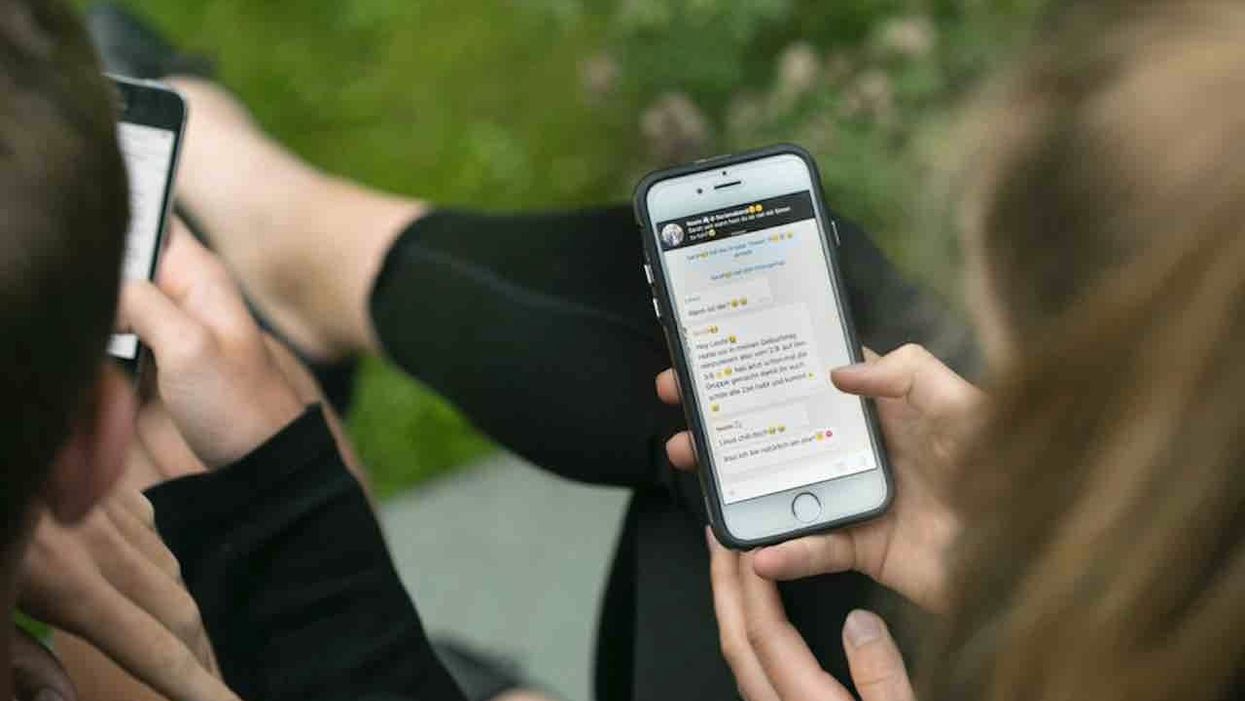
Photo by Ute Grabowsky/Photothek via Getty Images

'They can still be intimate and flirty but lack the obvious nudity that could get you in trouble'
The Journal of Adolescent Health recently published a commentary on teenagers and "sexting" — i.e., sending or receiving sexually explicit videos, images, or text usually via mobile devices — which included 10 tips on "safe sexting."
The authors write that despite beliefs to the contrary, most teens aren't sexting — but the behavior among the age group is on the rise. To wit: April 2019 data found 14% of teens sent and 23% received sexually explicit images — which represents a 13% increase for sending and a 22% increase for receiving such images based on 2016 data.
Other downsides are that sexting is associated with an increased risk of cyberbullying victimization and participation in risky behaviors, including sexual risk, the commentary said — not to mention predatory adults out there who exploit such behavior.
But much like the attitude toward "safe sex" education, the authors take a kids-are-going-to-sext-whether-we-like-it-or-not approach to the issue and emphasize "safe sexting" in order to reduce harm to teenagers.
Here's a look at the authors' 10 tips — which include suggestions such as sending "boudoir" photos rather than nude images, how to not get caught by parents and police, and concealing one's identity:
1. If someone sends you a sext, do not send it to — or show — anyone else. This could be considered nonconsensual sharing of pornography, and there are laws prohibiting it and which outline serious penalties (especially if the image portrays a minor).
2. If you send someone a sext, make sure you know and fully trust them. "Catfishing" — where someone sets up a fictitious profile or pretends to be someone else to lure you into a fraudulent romantic relationship (and, often, to send sexts) — happens more often than you think. You can, of course, never really know if they will share it with others or post it online but do not send photos or video to people you do not know well.
3. Do not send images to someone who you are not certain would like to see it (make sure you receive textual consent that they are interested). Sending unsolicited explicit images to others could also lead to criminal charges.
4. Consider boudoir pictures. Boudoir is a genre of photography that involves suggestion rather than explicitness. Instead of nudes, send photos that strategically cover the most private of private parts. They can still be intimate and flirty but lack the obvious nudity that could get you in trouble.
5. Never include your face. Of course, this is so that images are not immediately identifiable as yours but also because certain social media sites have sophisticated facial recognition algorithms that automatically tag you in any pictures you would want to stay private.
6. Make sure the images do not include tattoos, birthmarks, scars, or other features that could connect them to you. In addition, remove all jewelry before sharing. Also consider your surroundings. Bedroom pictures could, for example, include wall art or furniture that others recognize.
7. Turn your device's location services off for all of your social media apps, make sure your photos are not automatically tagged with your location or username, and delete any meta-data digitally attached to the image.
8. If you are being pressured or threatened to send nude photos, collect evidence when possible. Having digital evidence (such as screenshots of text messages) of any maliciousness or threats of sextortion will help law enforcement in their investigation and prosecution (if necessary) and social media sites in their flagging and deletion of accounts.
9. Use apps that provide the capability for sent images to be automatically and securely deleted after a certain amount of time. You can never guarantee that a screenshot was not taken, nor that another device was not used to capture the image without you being notified, but using specialized apps can decrease the chance of distribution.
10. Be sure to promptly delete any explicit photos or videos from your device. This applies to images you take of yourself and images received from someone else. Having images stored on your device increases the likelihood that someone — a parent, the police, a hacker — will find them. Possessing nude images of minors may have criminal implications. In 2015, for example, a North Carolina teen was charged with possessing child pornography, although the image on his phone was of himself.
(H/T: Campus Reform)